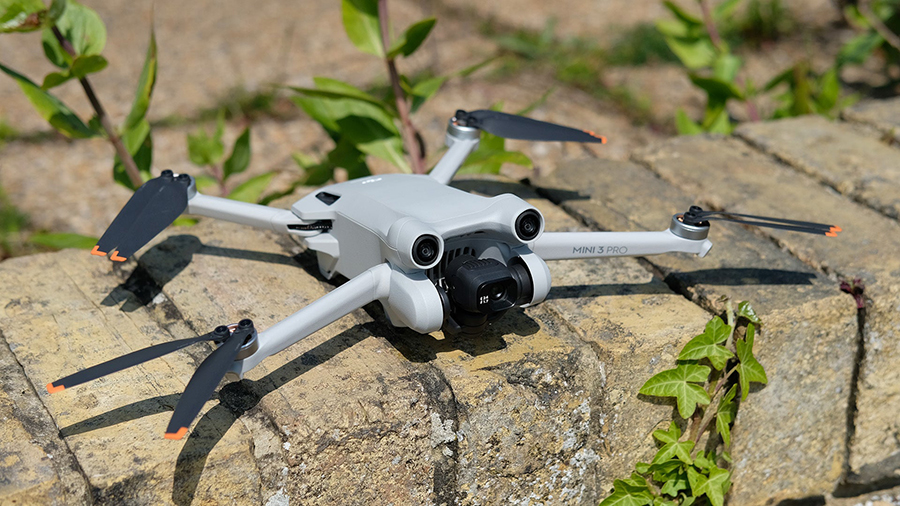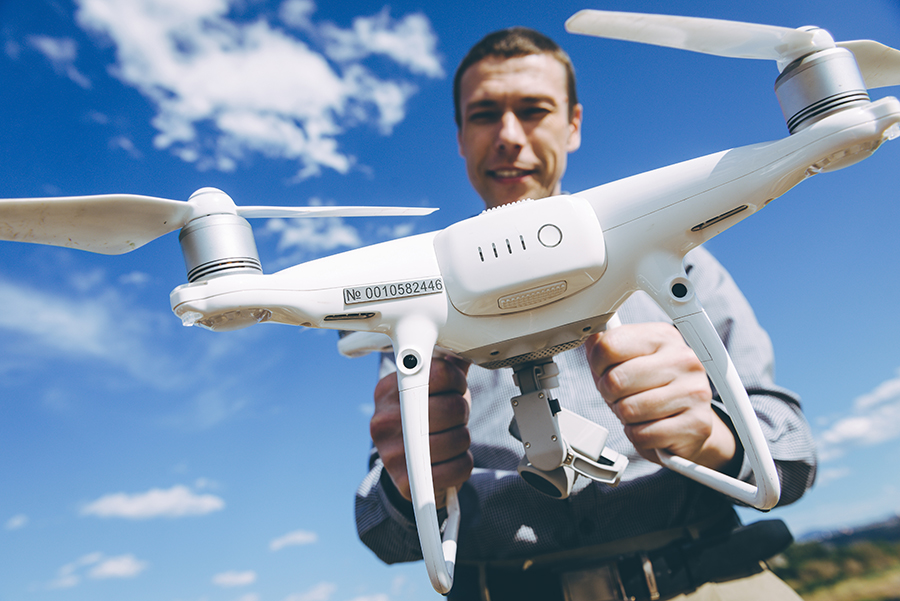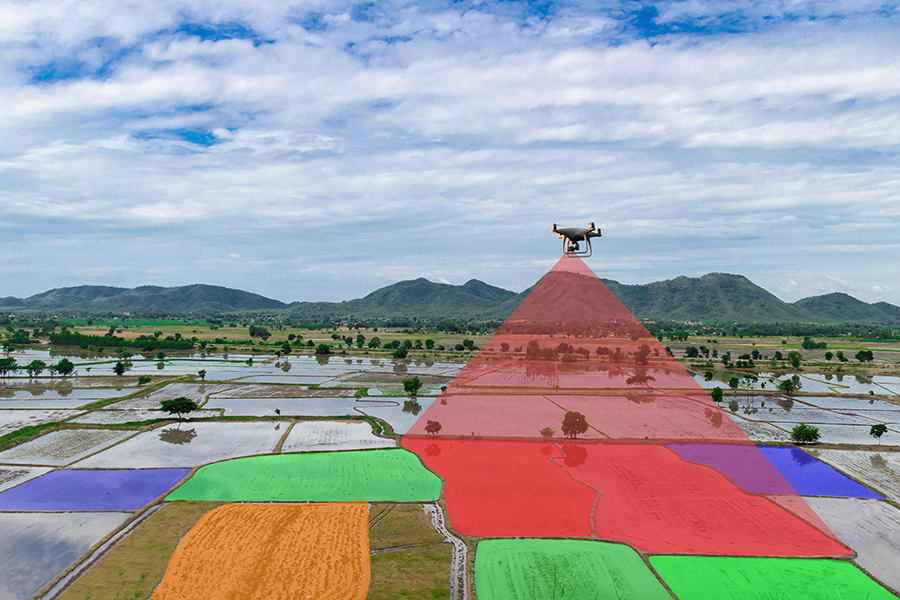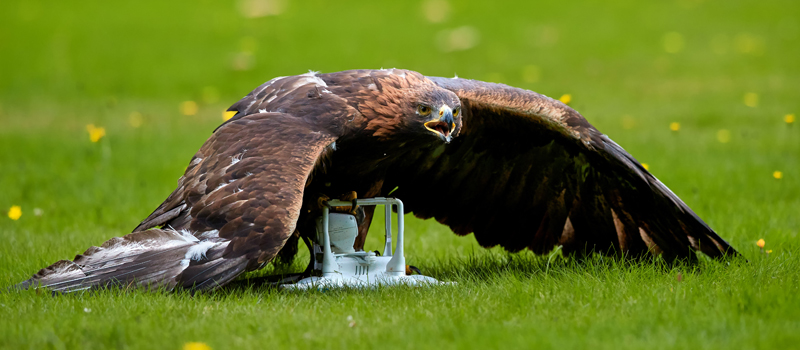Since its launch last year, the Air 2S has been the favorite drone for lots of people. It has a large image sensor, can record videos at 5.4K resolution, and is fairly priced considering its technology. It is an exceptional drone that has held up well over time.
The latest drone under DJI, the Mini 3 Pro, has been described by some as the drone that will replace the Air 2S as the uncontested favorite. First impressions of the Mini 3 Pro are looking great, but is it really good enough to dethrone the Air 2S?
Build quality, Weight, and Size
| Parameter | DJI Mini 3 Pro | DJI Air 2S |
| Weight | < 249 grams | 595 grams |
| Dimensions unfolded (L x W x H) | 171 x 245 x 62 mm | 183 x 253 x 77 mm |
| Diagonal length | 247 mm | 302 mm |
One of the starkest differences between the two drones being compared here is the size. The Mini 3 Pro is still a part of the DJI Mini line, after all. This simply means that it is significantly smaller and lighter than the Air 2S. If you tend to travel frequently with a drone, then the portability of the Mini 3 Pro gives it a distinct advantage.
The body of the Air 2S is very similar to the previous iterations of the Mavic Airline, made just slightly larger to accommodate the additional obstacle avoidance sensors. It is a reliable design that has proven good enough to be iterated multiple times through the generations of Mavic drones.
The Mini 3 Pro represents the first time that DJI has made a significant re-design of the hull of their ultra-portable drones. The front propeller arms of the Mini 3 Pro are positioned lower than the rear arms, and both pairs are angled slightly forward. The landing gear integrated into the propeller arms is also gone in exchange for soft pads underneath the main body of the drone.
The design of the Mini 3 Pro makes it a little more aerodynamic. This is immediately apparent after just a few minutes of flying the drone. It is zippy and very responsive. However, the lack of robust landing gear may make the drone more prone to damage should you land on an uneven surface. If this is a huge concern for you, then the classic design of the Air 2S should still be more appealing.
| Parameter | DJI Mini 3 Pro | DJI Air 2S |
| Image sensor | 1 / 1.3” CMOS | 1” CMOS |
| Photo resolution | 48 MP | 20 MP |
| Video resolution | 4k @ 60 fps / 2.7K @ 60 fps / 1080p @ 60 fps / 1080p @ 120 fps | 5.4K @ 30 fps / 4K @ 60 fps / 2.7K @ 60 fps / 1080p @ 120 fps |
| Aperture | f/1.7 | f/2.8 |
| ISO range | 100 – 6400 (Auto) 100 – 6400 (Manual) | Photo: 100 – 3200 (Auto) 100 – 12800 (Manual) Video: 100 – 3200 (Auto) 100 – 3200 (Manual) 10-Bit Dlog-M Video: 100 – 800 (Auto) 100 – 1600 (Manual) |
| Shutter speed | 2 – 1/8000 s | 8 – 1/8000 s |
| Max bitrate | 150 Mbps | 150 Mbps |
| Digital zoom range | 4K – 2x 2.7K – 3x 1080p – 4x | 4K / 30 fps – 4x 2.7K / 60 fps – 3x 2.7K / 30 fps – 6x 1080p / 60 fps – 6x 1080p / 30 fps – 8x |
| HDR? | Photo: Supported in Single Shot mode Video: Supported when shooting at 24/25/30 fps | Supported in Photo mode Redundant with 10-bit Dlog-M for videos |
| AEB? | 3/5 bracketed frames at 2/3 EV | 3/5 bracketed frames at 0.7 EV bias |
| Photo format | JPEG / DNG | JPEG / DNG |
| Video format | MP4 / MOV | MP4 / MOV |
| Color profile | Normal D-Cinelike | Normal 10-bit Dlog-M 10-bit HLG |
Both the Mini 3 Pro and the Air 2S have excellent cameras that make them premium options in the ultraportable drone market. The Mini 3 Pro deserves recognition as the first drone in the DJI Mini line to be able to capture 4K videos at 60 fps, supported by a large image sensor and a high video bitrate.
However, the 1” CMOS image sensor of the Air 2S still gives it a few distinct advantages. The Air 2S can record videos up to a resolution of 5.4K, something that is beyond the capabilities of the Mini 3 Pro. If you intend to record videos that are as detailed as possible, then the Air 2S might be exactly what you need.
Pro-level filmmakers also prefer the Air 2S because of its more diverse color profiles. The Air 2S can record videos at 10-bit Dlog-M and 10-bit HLG, while the Mini 3 Pro can only record at 8-bit D-Cinelike. If you’ve gotten used to the color grading of the Dlog profile, then a Mini 3 Pro might feel like a huge downgrade.
However, the Mini 3 Pro also has a few nifty tricks up its sleeve. The Mini 3 Pro has a wider ISO range in video mode. Combined with a larger fixed aperture, this makes the Mini 3 Pro easier to use for shooting scenes in low lighting.
The Mini 3 Pro has a true portrait mode where the gimbal physically rotates to a vertical orientation, giving the portrait shots a wider field of view. The Mini 3 Pro can also capture images at 48 MP resolution using Quad Bayer technology, despite the smaller image sensor.
In all other aspects, the Mini 3 Pro and Air 2S are more similar. Both cameras can shoot at up to 120 fps at 1080p resolution. Both of them support digital zoom, although the Air 2S has the advantage of going up to 4x at 4K resolution compared to only 2x in the Mini 3 Pro.
Both drones also offer the usual suite of camera modes, Quick Shots, and Intelligent Flight Modes that DJI has been known for. This has been a refreshing addition to the Mini 3 Pro because it is the first Mini drone that comes with Intelligent Flight Modes.
Both the Mini 3 Pro and Air 2S drones have excellent cameras that will likely set the standard for the coming years. However, it does seem that the Air 2S can still offer more for professional users.
Gimbal
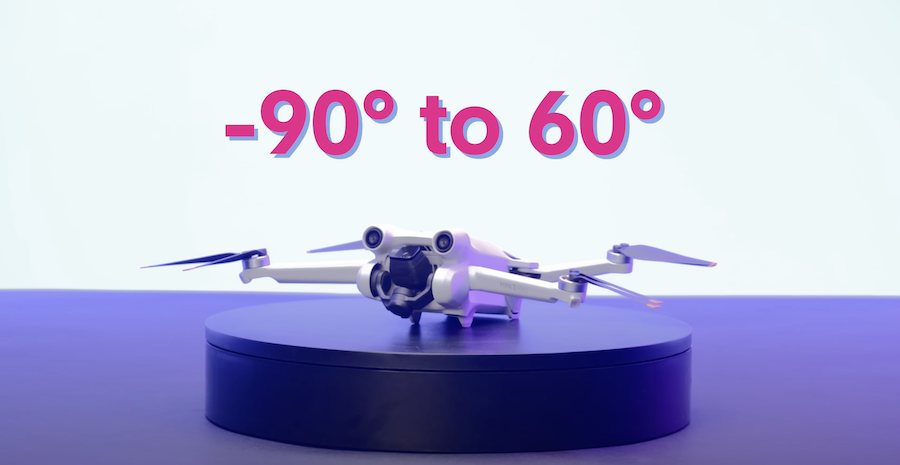
| Parameter | DJI Mini 3 Pro | DJI Air 2S |
| Stabilization | 3-axis | 3-axis |
| Mechanical range | Tilt: -135° to 80° Roll: -135° to 45° Pan: -30° to 30° | Tilt: -135° to 45° Roll: -45° to 45° Pan: -100° to 100° |
| Controllable range | Tilt: -90° to 60° Roll: -90° to 0° | Tilt: -90° to 0° (default); -90° to 24° (extended) |
The Mini 3 Pro and Air 2S both have 3-axis mechanical gimbals for camera stabilization and control. However, the gimbal of the Mini 3 Pro clearly holds the advantage here.
One of the more unique abilities of the Mini 3 Pro’s gimbal is being able to roll a full 90 degrees to take portrait photos. This means that portrait photos aren’t just cropper versions of landscape photos – they make full use of the camera’s field of view. This should come in handy now that portrait is becoming more common on social media channels.
While both the Mini 3 Pro and Air 2S have gimbals that can point vertically down. Another advantage of the Mini 3 Pro gimbal is that it can tilt upward to 60 degrees, allowing the camera to “lookup.” By default, the Air 2S can only remain along the horizontal plane although the tilt range can be extended up to 24 degrees by enabling the “Allow Upward Gimbal Rotation” setting in the app.
Battery
| Parameter | DJI Mini 3 Pro | DJI Air 2S |
| Type | Li-ion | Li-Po 3S |
| Capacity | Standard: 2453 mAh Plus: 3850 mAh | 3750 mAh |
| Weight | Standard: 80.5 g Plus: 121 g | 198 g |
| Flight time, hovering (advertised) | Standard: 30 minutes Plus: 40 minutes | 30 minutes |
| Flight time (tested) | Standard: 26 min, 50 sec Plus: 36 min, 48 sec | 25 min, 25 sec |
The Mini 3 Pro has two battery options. The standard 2453-mAh battery comes with the drone by default. You can also choose to get the larger and heavier Plus version that gives several extra minutes of flight time.
Take note that using the Plus battery of the Mini 3 Pro will bring the drone’s total takeoff weight beyond the 250-gram threshold. If you’re flying this drone without an FAA registration, then it’s best to stick with the standard battery.
The battery of the Air 2S is much heavier but has a capacity that is similar to that of the Mini 3 Pro Plus battery version. The advertised hover times of the two drones are exactly equal if the Air 2S is compared to the standard Mini 3 Pro battery. An extra 10 minutes of flight time is the advertised benefit of upgrading to the Plus battery.
Our indoor hover tests provide more realistic values for flight time. Between the two, the Mini 3 Pro holds a slight edge even just with its standard battery. The advantage is probably due to the Mini 3 Pro’s lighter body and larger propellers making hovering in place less demanding on the motors.
Upgrading to the Plus battery indeed gives the Mini 3 Pro about 10 minutes of extra flight time. This is a significant upgrade and should be enough reason to make the Plus battery a compelling accessory to get for the Mini 3 Pro, especially for professional users.
Remote controller
| Parameter | DJI Mini 3 Pro | DJI Air 2S |
| Controller type | DJI RC | RCN1 |
| Max battery time | Approx. 4 hours | Approx. 6 hours |
| Integrated screen? | Yes | No |
| Transmission technology | OcuSync 3.0 | OcuSync 3.0 |
| Max transmission range | 12 km | 12 km |
| Live view quality | 1080p @ 30 fps | 1080p @ 30 fps |
| Max bitrate | 5.5 Mbps (download) 18 Mbps (live video) | 44 Mpbs (download) 16 Mpbs (live video) |
| Latency | Approx. 120 ms | Approx. 120 ms |
Comparing the two drones based on their remote controllers is a bit complex because both these drones are compatible with multiple controllers.
By default, the Air 2S comes with the RCN1 controller. This is the sleek, redesigned controller that DJI has paired with the Air and Mini controllers. Although suitably portable, one thing that the RCN1 controller lacks is an integrated screen. This means that you will need to use an external device such as a smartphone or tablet.
The RCN1 controller is also compatible with the Mini 3 Pro. In fact, it’s possible to buy the Mini 3 Pro without any controller – the first time that DJI has made such an offer available – if you prefer to just use an old RCN1 controller.
The default controller for the Mini 3 Pro is the new DJI RC controller. This is a fairly compact controller that comes with an integrated screen and uses OcuSync 3.0 technology. Compared to the RCN1, the DJI RC provides a better live view experience.
The Air 2S is also compatible with the DJI Smart Controller. This is a higher-end controller option that comes with an integrated screen. However, the DJI website states that the Smart Controller is no longer in production.
Between the DJI RC and the RCN1 controllers, the new DJI RC is definitely the better option in terms of features and technology. The biggest downside is that it also costs more. The Mini 3 Pro bundle that comes with the DJI RC controller is about $150 more expensive than the bundle that comes with the RCN1 controller.
Obstacle avoidance
| Parameter | DJI Mini 3 Pro | DJI Air 2S |
| Downward | Hovering range: 0.5 to 30 m | Hovering range: 0.5 to 30 m |
| Forward | Measurement range: 0.39 – 25 | Measurement range: 0.38 – 23.8 m |
| Backward | Measurement range: 0.36 – 23.4 m | Measurement range: 0.37 – 23.4 m |
| Upward | None | Measurement range: 0.34 – 28.6 m |
| ADS-B? | No | Yes |
The Mini Pro 3 is the first Mini drone to come with a sensing system. The sensors at the front and back of the drone make this feature fairly obvious. Coupled with the Advanced Pilot Assistance System (APAS 4.0), the Mini Pro 3 can automatically detect and fly around obstacles. The presence of these sensors has also helped augment the Mini Pro 3 with a couple of Intelligent Flight Modes.
The Air 2S also comes with APAS and a set of sensors. A distinct advantage it has over the Mini 3 Pro is that it also has an upward-facing sensor, making its obstacle avoidance system closer to being omnidirectional.
One feature that is glaringly missing in the Mini 3 Pro is ADS-B. DJI has used this feature to implement the AirSense system for all of their drones released after 2020 except for the Mini line. AirSense allows drone pilots to receive notifications when there are manned aircraft nearby, giving them allowance to give right of way.
Although the usefulness of ADS-B for drone pilots is still under debate, it does not bode well that the Mini Pro 3 is missing one of DJI’s flagship safety features. A little extra info never hurt anybody, especially now that the national airspace is becoming more populated than ever.
Flight performance
| Parameter | DJI Mini 3 Pro | DJI Air 2S |
| Max speed | 16 m/s (S mode) 10 m/s (N mode) 6 m/s (C-mode) | 19 m/s (S mode) 15 m/s (N mode) 5 m/s (C mode) |
| Max wind speed resistance | 10.7 m/s (Level 5) | 10 7 m/s (Level 5) |
| Thrust-to-weight ratio | 70 | 74 |
If you’re looking for pure speed and power, then the Mini 3 Pro simply does not hold a candle to the Air 2S. With its more powerful motors, the Air 2S is significantly faster and can generate more lift than the Mini 3 Pro. The Air 2S will certainly fare better if you plan on tracking fast-moving subjects or if you just enjoy the thrill of pushing a drone to the limits of its speed.
Where the Mini Pro 3 excels is maneuverability and responsiveness. The design of the Mini Pro 3 is quite unique. Instead of the propeller arms being parallel to the ground, its arms are angled forward. There is also no landing gear integrated into the propeller arms. This improves the aerodynamics of the drone, resulting in responsiveness that is best experienced rather than described.
Camera modes and flight modes
| Parameter | DJI Mini 3 Pro | DJI Air 2S |
| Still photography modes | Single shot Interval (2- 60 s) AEB Panorama Burst Mode | Single shot Interval (2- 60 s) AEB Panorama Burst Mode |
| QuickShots | Dronie Helix Boomerang Asteroid Rocket Circle | Dronie Helix Boomerang Asteroid Rocket Circle |
| MasterShots mode? | Yes | Yes |
| Intelligent Flight Modes | Active Track 4.0 Point of Interest 3.0 Spotlight 2.0 hyperlapse | Active Track 4.0 Point of Interest 3.0 Spotlight 2.0 hyperlapse |
The inclusion of Intelligent Flight Modes in the Mini 3 Pro is one of the biggest upgrades to the Mini line for this generation. Looking at the comparison table above, this puts the Mini 3 Pro in league with the Air 2S.
The Mini 3 Pro has all the Intelligent Flight Modes that have made the Air 2S one of the most favorite camera drones of the last few years. It even has the MasterShots mode that allows you to string together multiple flight maneuvers while the drone’s camera remains fixated on a subject. This should make the Mini 3 Pro massively useful both for recreational and professional drone photographers.
Price
| Parameter | DJI Mini 3 Pro | DJI Air 2S |
| Drone only | $669 | – |
| Drone + RCN1 controller | $759 | $999 |
| Drone + DJI RC controller | $909 | – |
| Fly More Combo | + $189 | $1299 |
| Fly More Combo Plus | + $249 | – |
| Fly More Combo w/ Smart Controller | – | $1499 |
Both the Mini 3 Pro and the Air 2S have different pricing schemes, making a direct comparison tough to do.
The Mini 3 Pro can be bought standalone for $669. This is the cheapest bundle and comes with no remote controller – the first time that DJI has offered such a package. This is ideal for when you already have an existing RCN1 controller and would not want to pay for an extra.
As mentioned, there are two controller options for the Mini 3 Pro – the old RCN1 and the new DJI RC controller. The bundle with the DJI RC controller costs $150 more. The new controller is very much worth the price difference, but it is also understandable if people are apprehensive about spending for it.
As with other DJI drones, the Mini 3 Pro can also be purchased with more accessories via the Fly More Combo. There is a more expensive Fly More Combo that includes the Plus version of the batteries instead of the standard ones included in the basic Fly More Combo.
The basic bundle of the Air 2S comes with the RCN1 controller. It is also sold in two Fly More Combo options, with the more expensive one coming with the Smart Controller.
The most direct price comparison we can make between the two drones is between the bundles that come with the old RCN1 controllers. In this context, the Air 2S is still $240 more expensive than the Mini 3 Pro.
Which one is better?
Now we ask the ultimate question – is the Mini 3 Pro better than the Air 2S? Is it good enough to be called the Air 2S killer?
The Mini 3 Pro being the “Air 2S killer” is quite a bold claim, especially considering how many people absolutely adore their Air 2S drones. As we have seen from this detailed comparison, there isn’t a clear winner between the two. The Mini 3 Pro is smaller, cheaper, offers more gimbal movement, and has a longer flight time. The Air 2S is still better in terms of flight performance, obstacle avoidance, and camera features.
The Mini 3 Pro might be less expensive than the Air 2S, but also costs a lot more compared to the Mini 2. The two previous generations of the DJI Mini line kept the price below $500, making it a product line that easily appeals to beginners. That can no longer be said of the Mini 3 Pro. Even with the RCN1 bundle, we would not exactly recommend the Mini 3 Pro for people looking to buy their first-even drones.
Instead, the positioning of the Mini 3 Pro seems to be just mid-way between the old Mini drones and the Airline. It’s still wonderfully small and light and bypasses the FAA’s requirement for drone registration, but it can stand toe-to-toe with the Air drones in terms of camera technology and obstacle avoidance features.
If you already have an Air 2S, then getting the drone-only Mini 3 Pro package is worth considering. This is a fairly inexpensive way to get add a smaller drone to your arsenal.
Pro users may also find some value in getting a Mini 3 Pro. If your drone jobs have you frequently traveling around, the portability of the Mini 3 Pro could be a great quality-of-life improvement. Getting the new DJI RC controller for $150 more is entirely exceptional and depends on how much you value the convenience of not having to hook up an external device to the controller.
No, the Mini 3 Pro is not an Air 2S killer, and that’s perfectly fine. It is an excellent product that can hold its own even in today’s crowded market for drones.
